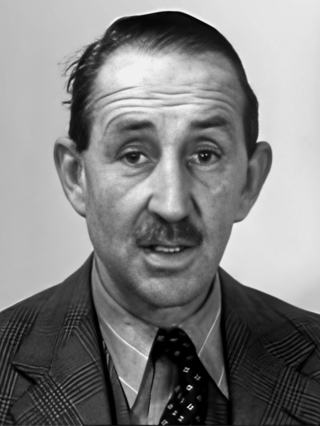
The Ulster Unionist Party (UUP) is a unionist political party in Northern Ireland. The party was founded as the Ulster Unionist Council in 1905, emerging from the Irish Unionist Alliance in Ulster. Under Edward Carson, it led unionist opposition to the Irish Home Rule movement. Following the partition of Ireland, it was the governing party of Northern Ireland between 1921 and 1972. It was supported by most unionist voters throughout the conflict known as the Troubles, during which time it was often referred to as the Official Unionist Party (OUP).

The 1832 United Kingdom general election was held on 8 December 1832 to 8 January 1833, to elect members of the House of Commons, the lower house of Parliament of the United Kingdom. It was the first held in the Reformed House of Commons following the Reform Act, which introduced significant changes to the electoral system.

Basil Stanlake Brooke, 1st Viscount Brookeborough,, styled Sir Basil Brooke, 5th Baronet, between 1907 and 1952, and commonly referred to as Lord Brookeborough, was an Ulster Unionist Party (UUP) politician who served as the third Prime Minister of Northern Ireland from May 1943, until March 1963.

The Senate of Northern Ireland was the upper house of the Parliament of Northern Ireland created by the Government of Ireland Act 1920. It was abolished with the passing of the Northern Ireland Constitution Act 1973.
John Warden Brooke, 2nd Viscount Brookeborough, PC (NI), was a Northern Irish politician. He was the son of the 1st Viscount Brookeborough, third Prime Minister of Northern Ireland.

The 1945 Northern Ireland general election was held on 14 June 1945. The election saw significant losses for the Ulster Unionist Party, though they retained their majority.

The 1965 Northern Ireland general election was held on 25 November 1965. Like all previous elections to the Parliament of Northern Ireland, it produced a large majority for the Ulster Unionist Party.

The 1949 Northern Ireland general election was held on 19 February 1949. The election became known as the Chapel-gate election because collections were held at churches in the Republic of Ireland to support the Nationalist Party campaign.

Alan Henry Brooke, 3rd Viscount Brookeborough, is a Northern Irish peer and landowner. He is one of the 92 hereditary peers who remain in the House of Lords; he sits as a crossbencher. He is the current Lord Lieutenant of Fermanagh.
Charles Beattie was a Northern Irish farmer and auctioneer. Active in the Ulster Farmers' Union and in Unionist associations, he achieved senior office in the Orange Order and the Royal Black Institution and served on Omagh Rural District Council from 1952 until his death. He is principally known for an exceptionally brief career as a Member of the United Kingdom Parliament representing Mid Ulster; he did not win an election, but was declared elected when his opponent was disqualified. However, a few weeks after he took his seat, he was discovered to be holding an "office of profit under the Crown" which disqualified him.
Events during the year 1921 in Northern Ireland.

Dame Dehra S. Parker, GBE, PC (NI), was the longest serving female MP in the House of Commons of Northern Ireland.
Ards was a constituency of the Parliament of Northern Ireland.

Lisnaskea was a constituency of the Parliament of Northern Ireland. It was located in County Fermanagh and included the namesake town of Lisnaskea.

North Londonderry was a county constituency comprising the northern part of County Londonderry. It was created in 1929, when the House of Commons Act 1929 introduced first-past-the-post elections throughout Northern Ireland. It was created in 1929 as one of five single-member constituencies replacing the former five-member Londonderry constituency. The constituency survived unchanged, returning one member of Parliament until the Parliament of Northern Ireland was temporarily suspended in 1972, and then formally abolished in 1973.
West Down was a constituency of the Parliament of Northern Ireland.
North Down was a constituency of the Parliament of Northern Ireland.

The 2022 Northern Ireland Assembly election was held on 5 May 2022. It elected 90 members to the Northern Ireland Assembly. It was the seventh assembly election since the establishment of the assembly in 1998. The election was held three months after the Northern Ireland Executive collapsed due to the resignation of the First Minister, Paul Givan of the Democratic Unionist Party (DUP), in protest against the Northern Ireland Protocol.














